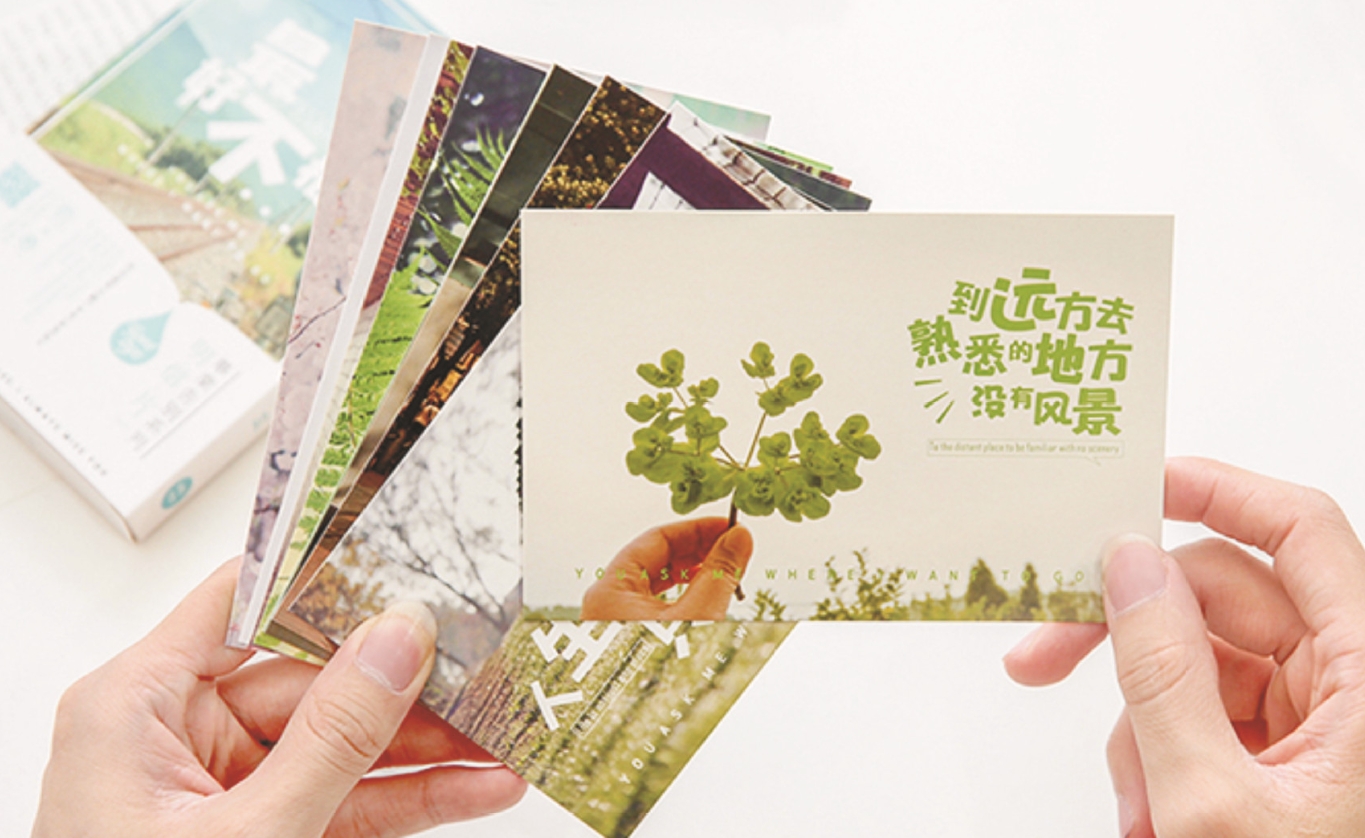Postcards, as a traditional way of communication, still carry strong cultural and emotional values in modern society. With the continuous advancement of printing technology, the production process of postcards has become more refined and diversified. The following Jicai will provide a detailed introduction to the landing process of postcard design, including common shapes, post printing techniques, production processes, knife mold introduction, pre press inspection, and precautions.

1、Common Styles
The design of postcards is rich and diverse, aiming to meet different occasions and personalized needs: postcards come in various shapes, including standard rectangles, squares, circles, and irregular shapes. The standard rectangular postcard size is usually 148mm x 100mm, but other sizes can also be chosen according to personal preferences or design needs. Square postcards have a unique visual effect and are suitable for creative and artistic design. Circular and irregular postcards are more personalized and often used for special themes or commemorative events.
2、Common post press processes
Post printing process is the key to improving the quality of postcards, and common processes include:
Post press processing is an important step in enhancing the texture and aesthetic appeal of postcards. Common post press processes include lamination, hot stamping, silver stamping, localized UV treatment, concave convex treatment, etc. Film coating can protect ink from scratches and make the surface of postcards smoother and more beautiful. Hot stamping and silver stamping can enhance the luxury of postcards and are commonly used in high-end designs. Localized UV and concave convex treatment can enhance visual impact and make postcards more artistic.
3、Production process
The production process of postcards usually includes the design stage, pre press production, printing, cutting and organizing, post-processing, and receiving steps.
·Design phase: The designer designs the pattern, text, and layout of the postcard based on the requirements and theme. Customers can provide design content or have professional designers arrange the layout.
·Pre press production: Adjust the color and size of the image, and prepare the materials required for printing. Confirm the printing paper and printing process, such as copperplate paper, matte paper, white cardboard, etc.
·Printing: Printing is carried out using technologies such as digital printing, offset printing, or lithography. Digital printing is suitable for small-scale and personalized printing, while offset printing is commonly used for large-scale production.
·Cutting and organizing: After printing, cut the postcard into standard sizes and perform necessary sorting and proofreading.
·Post processing: Performing post printing processes such as lamination, hot stamping, UV treatment, etc. to enhance the texture and aesthetics of postcards.
·Delivery: Choose the appropriate delivery method based on customer needs, such as self pickup, express delivery, logistics, etc.
3、Introduction and cost of knife molds
Knife molds are important tools for making postcards with special shapes. It is a specially designed cutting tool used to accurately cut a large amount of flat printed paper into the desired shape according to a predetermined contour. Whether it is a circular, square, or irregular postcard, the knife mold ensures that the cutting of each card is precise and error free. The use of knife molds greatly improves the personalized production efficiency and accuracy of postcards.
4、Pre press inspection of postcards
Pre press inspection is a crucial step in ensuring the quality of postcard printing. Before printing, it is necessary to carefully check the design documents, including whether the fonts are curved, whether the images are embedded, and whether the size and format meet the printing requirements. In addition, Jicai recommends setting a 3mm bleeding line to ensure that important content is not lost during the cutting process. The purpose of pre press inspection is to ensure that the design documents can accurately present the expected effect during the printing process.
5、Precautions for rounded corners
·The size of rounded corners is usually divided into 5mm (suitable for VIP thick cards, business cards, etc.) and 7.5mm (suitable for pads, posters, etc.), and special requirements need to be marked.
·The short edge of the paper size must not be less than 40mm. If it is less than 40mm, a separate knife mold needs to be made for cutting.
·When creating a design draft with color blocks, it is necessary to cover the bleeding area in the image, otherwise there may be white spots when making rounded corners.
·Specific cards such as fully transparent cards, fog transparent cards, 3D cards, etc. require rounded corners, and the edges may appear uneven and have rough edges. It is recommended to use a cutting die to create the desired shape.
Summary: The design implementation process of postcard manufacturers involves multiple links and details, requiring close cooperation between designers, printing factories, and customers. Through careful design and meticulous production, postcards with unique charm and emotional value can be created, conveying strong cultural and emotional messages.
